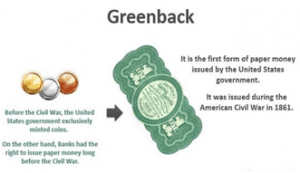SOCIAL JUSTICE- GOVERNANCE
1. THE ANNUAL STATUS OF EDUCATION REPORT 2022
TAGS: GS-II- GOVERNANCE
THE CONTEXT: The ASER Report 2022 released recently revealed that almost all (98.4%) students in the age bracket of 6-14 years are now enrolled in schools.
Highlights of ASER 2022:
- In ASER 2022 Survey, 7 lakh candidates from 19,060 schools in 616 districts were surveyed to calculate the learning outcomes post-pandemic on school children.
- Enrollment has gone from 97.2 per cent in 2018 to 98.4 per cent in 2022.
- As many as 72.9 per cent of the surveyed students go to government schools.
- In only three states, the number of girls not going to school is above 10% – Madhya Pradesh (17%), Uttar Pradesh (15%), and Chhattisgarh (11.2%).
- Nationally, children’s basic reading ability has dropped to pre-2012 levels, reversing the slow improvement achieved in the intervening years.
- In both government and private schools, only 20.5% students of Class 3 can read, compared to 27.3% in 2018.
- The proportion of Class 5 students who can read has dropped to 42.8% in 2022, compared to 50.5% in 2018.
VALUE ADDITION:
About ASER Survey:
- It is a citizen-led household survey that provides estimates of the enrolment status of children aged 3-16 and the basic reading and arithmetic levels of children aged 5-16 at the national, state and district level.
- ASER is published by NGO Pratham, and the survey has been conducted every year since 2005.
- The survey reaches children in the age group of 3-16 in almost all rural districts of India.
- It uses household rather than school-based sampling.
ENVIRONMENT, ECOLOGY AND CLIMATE CHANGE
2. YANGTZE FINLESS PORPOISE
TAGS: PRELIMS PERSPECTIVE- GS-III- ENVIRONMENT AND ECOLOGY
THE CONTEXT: Scientists recently found that checking sand mining in Dongting lake in China can help the rebounding of the population of the Yangtze finless porpoise.
THE EXPLANATION:
- Previous reports had shown the porpoise were pushed out of certain stretches of their habitat due to sand mining.
- The Chinese government announced a crackdown on illegal sand mining along the entire length of the river Yangtze.
ABOUT YANGTZE FINLESS PORPOISE
- The Yangtze River, the longest river in Asia is home to these porpoises.
- Yangtze finless porpoise is known for its mischievous smile and has a level of intelligence comparable to that of a gorilla.
- These are very small compared to whales and slow-moving inhabitants
- These are good indicators of the health of their environment.
- Conservation status:
o IUCN Red List: Critically Endangered
3. WHAT IS SEDGE WARBLER?
TAGS: PRELIMS PERSPECTIVE- GS-III- ENVIRONMENT AND ECOLOGY
THE CONTEXT: Birders and ornithologists recently in the State of Kerala spotted a migratory bird the Sedge Warbler.
THE EXPLANATION:
- The sedge warbler is a medium-sized warbler of marshes, reedbeds and wetlands that can be spotted singing from perches on reeds and willow bushes.
- The male sedge warbler introduces random phrases into its repertoire which is known for mimicking.
- The male warbler never sings the same song twice; he attracts more mates the more phrases his song has.
- These are insectivores in nature.
- Distribution and habitat:
o It breeds across Europe and western and central Asia and is migratory. After feeding up post-breeding, they migrate quickly across southern Europe and the Sahara from August to September.
o All sedge warblers spend winter in sub-Saharan Africa, from Senegal in the west to Ethiopia in the east, and as far south as the eastern Cape Province of South Africa and northern Namibia. - Conservation status:
o IUCN Red List: Least concern
ECONOMIC DEVELOPMENTS
4. WHAT IS THE ADVANCE AUTHORISATION SCHEME?
TAGS:GS-III- ECONOMY- GOVERNMENT SCHEMES
THE CONTEXT: Recently, the directorate general of foreign trade (DGFT) simplifies the composition fee for export obligation extension under the advance authorisation scheme.
THE EXPLANATION:
About the Advance authorisation scheme:
- An advance authorisation scheme allows duty-free import of inputs, which have to be mandatorily used in products that are required to be exported within a specified time.
- They are not allowed to sell the products in the domestic market.
- Advance Authorization is valid for 12 months from the date of issue of such Authorization.
- The revised composition fee formula is based on a specific rate for different levels of the ‘CIF (cost, insurance, freight) value of authorisation.
- The fees levied under these 3 slabs; at ₹5,000 for a cost, insurance, freight (CIF) value of advance authorization license valued at up to ₹2 crores, ₹10,000 for a value between ₹2 crore and 10 crores, and ₹15,000 for value over ₹10 crores.
- The simplification of calculations for composition fees helps in automation and faster service delivery by making the process more efficient and easier to understand.
Exemptions under Advance Authorisation Scheme
• Under the Advance Authorisation Scheme, the following duties are exempt: basic customs duty, education cess, social welfare cess, anti-dumping duty, countervailing duty, and safeguard duty. IGST and compensation cess are also exempted.
VALUE ADDITION:
DIRECTORATE GENERAL OF FOREIGN TRADE (DGFT)
• About: Directorate General of Foreign Trade (DGFT) organisation is an attached office of the Ministry of Commerce and Industry and is headed by Director General of Foreign Trade. It is responsible for formulating and implementing the Foreign Trade Policy with the main objective of promoting India’s exports.
• Headquarters: New Delhi
• Functions: Licensing of imports and exports. Regulate, restrict or prohibit exports and imports. It plays an advisory role to the Government on Policy measures pertaining to national and international economic scenarios.
PRELIMS PERSPECTIVE
5. WHAT DOES THE TERM ‘GREENBACK ‘ INDICATE?
TAGS: PRELIMS PERSPECTIVE
THE CONTEXT: The rupee weakened sharply against the US dollar recently amid sparse trading volumes as some foreign banks purchased the greenback, likely on account of overseas investors exiting the domestic market.
THE EXPLANATION:
What is Greenback?
- A greenback is a term for U.S. paper dollars.
- It was legal tender by law backed by the United States government.
- The issuance was primarily intended to cover up the expenses of the American Civil War.
Why is it called Greenback?
- Since the backside of this paper money is inked in green color, it got the name greenback.
- Because they were not fully backed by gold, greenbacks lost value and caused inflation in the economy.
- Even though they were not minted after the nineteenth century, the terminology is now used in reference to the United States Dollar.
What is greenback trading?
- Traders in the foreign exchange market use the term greenback to refer to the United States Dollar.
- Hence it indicates the trading in the United States Dollar or U.S. dollar index.

